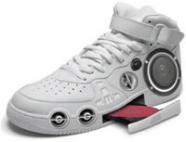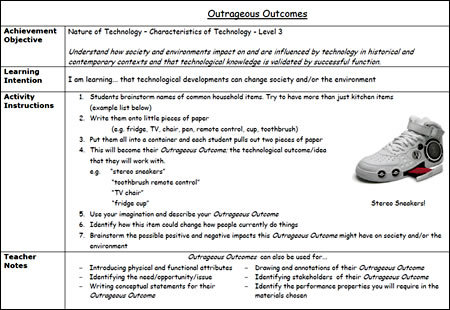Curriculum focused activities
Full list of activities
Ts curriculum focused activitiesTechnological practice activities
Brief development
Planning for practice
Outcome development and evaluation
Technological knowledge activities
Technological modelling
Technological products activities
Technological systems
Nature of technology
Characteristics of technology
Characteristics of technological outcomes
Selena and Paul have collaborated on a number of projects to help teachers understand aspects of the technology learning area in The New Zealand Curriculum. Selena has been facilitating the GIF Resource Development and Facilitation Years 7-10 Technology Project and Paul has been working as a Technology Facilitator and is currently part of the team of National Technology Professional Development Facilitators.
In their initial work, they saw the need to provide ideas for activities for teachers to try with their students in a classroom situation, to start the process of developing curriculum understandings. "We pulled together a range of activities that both of us have used successfully, or seen teachers use successfully. We aligned them to the learning intentions and indicators of progression," says Paul.
Most of the activities are related to the nature of technology and technological knowledge strands – the area of most need at the moment, says Selena. "Many are one-off activities developed for teachers to try out in a workshop or cluster meeting situation, and then with their own students to get them interacting right away with the concepts in those new strands."
This format was first trialled at a cluster meeting in Waikato/Bay of Plenty, where the aim was to develop consistency in teacher understandings at a curriculum component level across the two new strands. It was then used within other clusters, regional TENZ workshops and in staff meetings/professional development sessions in individual schools – "often the activities were just dotted around the room so teachers could readily interact with them," says Selena.
"The step-by-step learning in each activity is designed to help those who are trying something for the first time," says Paul, "starting with the achievement objective (AO), then working through the learning intention aligned to the indicators of progression."
While they have tried to place each activity against a specific curriculum level, Selena and Paul have found that many of the activities move quite well through the levels – depending on the degree of interaction with the activity or the strategy.
"It's about identifying what it is that the students are actually capable of doing," says Paul. "For example, in a junior secondary programme, if you are just beginning to build some concepts or understandings with your students around nature of technology you will need to be looking at the lower levels. But if you've done some stand-alone teaching – say, some activities or developing some conceptual knowledge about modelling – you might have a Year 3 or Year 4 class that could be demonstrating understandings corresponding to curriculum level 4."
The activities identified have deliberately not been linked back to the students' own practice. "Often the ideas related to 'modelling', 'products', and 'systems' are so well integrated into the students practice, the concepts actually become buried," says Selena. "So that's why we haven't consciously made that link." Paul emphasises that teachers who are engaging in good Technological Practice will quickly see the potential for linking back into the student practice. "We're not overly emphasising the links back within the activity because people are at different places in terms of their own understanding and where their students are at," he says.
Links between the components have been made in the teacher notes within some of the activities where appropriate. "So a 'Characteristics of Technological Outcomes' activity might also have a link or connection to 'Technological Products' for example," says Selena.
Selena also makes the point that the activities are just that – short activities. Both Paul and Selena emphasise that there has to be more to teaching the components than just one of these short activities. Eventually there needs to be more linkage between activities and whole units of work.
Paul also stresses that this is very much work in progress. "The material isn't perfect – it's a starting point from which people can grow their own understanding and that of their students." In an intermediate or junior secondary programme for example these could be developed more fully as 'Do Now' type activities (an initial activity to focus students at the beginning of a technology lesson) to develop some initial conceptual understandings about aspects from within the 'nature' or 'knowledge' strands. He also emphasises that the documents are being made available to teachers as Microsoft Word files "so that they can be easily modified by teachers to suit their students and their situation".
Ts curriculum focused activitiesSample activity:
Strategycot3 outrageous outcomes (Word, 54 KB)
See also the Years 7-10 Project.


